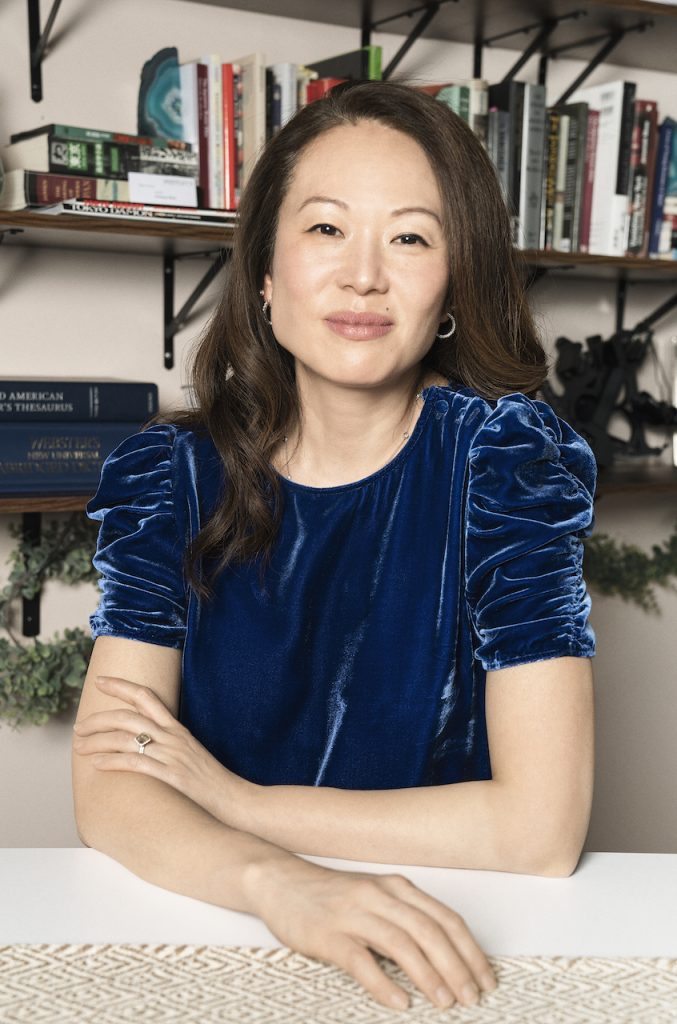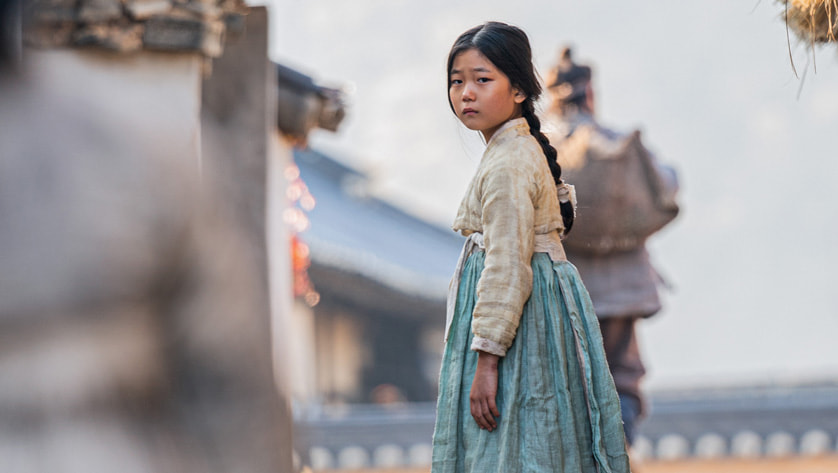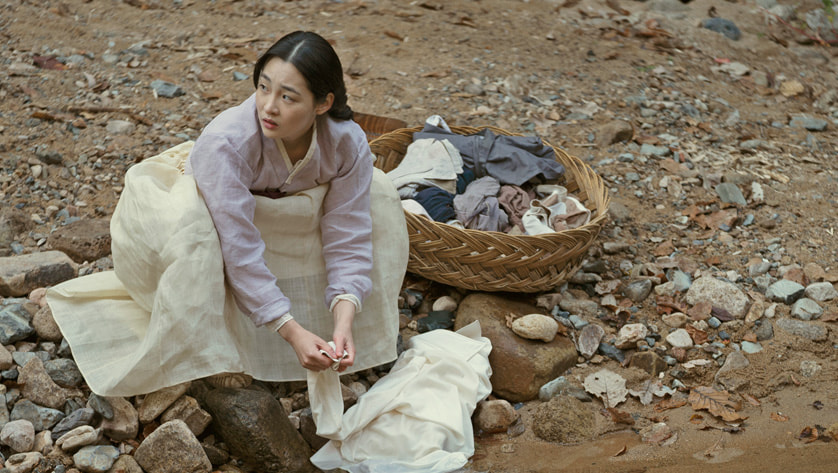Pachinko – a Japanese arcade-style ballbearing device used for gambling
“In pre-war Japan, they took a pinball machine and made it vertical to save space,” said screenwriter Soo Hugh (See, The Whispers). The writer described the title of her sprawling, epic, four generational saga spanning seventy years based on a novel by Min Jin Lee as the perfect metaphor for life. “It’s a game of chance. You may think you have control of the levers, but you don’t.” There are elements of luck, fate, and destiny involved.
Pachinko is a story of immigration. It’s a tug of war between adaptation and alienation, yearning and belonging. A saga of war and peace, love and loss, triumph and reckoning.
After her agent sent her the book, Soo Hugh read the scene in the book where Yangjin (Inji Jeong), Sunja’s mother, goes to the rice merchant to ask for a bag of rice so she can cook for her daughter on her wedding night. “It’s such a simple scene… no gun, no fireworks, no rapid fire dialogue.” This was the touchstone scene that made Soo decide Pachinko was going to become a television series. “The drama can be built on one person who loves someone so much that they have to beg for it. Those tears feel so earned.”

Soo Hugh. Photo by Victoria Stevens
A Matter Of Time
Pachinko spans seven decades and three countries – Korea, Japan, and America. Typically, stories of immigration follow a linear timeline, but not Pachinko, which jumps between the present and the past, while laying hopes for the future. “It’s crucial that this story wasn’t told in strict chronological order covering the beginning, middle and end.” Adhering to this conventional format wouldn’t have been the best canvas for Hugh to tell Sunja’s story and examine the themes she wanted to cover.
The constant dialogue between past and present talks about the generational immigrant experience
The story begins in the austere boarding houses for fishermen and farmers in 1915 Yeongdo, South Korea, to Japan and landing in the hustle bustle of 1989 New York City. In a short history lesson, Japan colonized South Korea in 1910 as part of its growing empirical ambitions, leaving many Koreans destitute and forced to flee to Japan. Once there, they were treated as second class citizens and labelled “Zainichi.” The term Pachinko took on a greater significance because these Korean refugees often failed to find meaningful work and Pachinko parlors were their only sources of income. They were a place to connect, exchange information, support each other, and socialize.
The writer felt that if the story was told linearly, the audience wouldn’t have understood the entire show until several seasons later. She wanted her own stamp on it.
Soo Hugh conceded that she’s seen the story of immigrants coming to another country in search of a better life. “Those are beautiful stories. I’ve seen that show before. How can I do it differently?” she questioned.
Pachinko is poetic in its scope as Sunja has conversations with both her younger and older selves. The key driver of this story is that Koreans emigrated to Japan after colonizing their homeland. “This is such a different psychic space than regular migration,” recalled Hugh, a child of South Korean immigrants. Hugh noted South Korea was no longer colonized when her family emigrated to America. “This puts our characters in such a specific snapshot.” This specificity is integral to the Korean immigrant story. “I use this specificity to tell universal stories. Broader brushstrokes would dilute this experience.”
Specificity is your biggest ally in broad storytelling
Sunja is portrayed as a seven year old girl, a woman aged sixteen to twenty-two, and a woman in her seventies. “It’s a beautiful way to map out the intricacies of life,” Hugh pondered. It’s also an uncommon joy to live with a character and her sprit for so many years.
The TV series is deliberately told in a non-linear fashion – a distinct departure from the book. “We wanted to tell a story of what time does to a family and how the actions of one generation affect the next.” Families never give up on each other. Soo Hugh likens her storytelling style to grabbing cupfuls of water from different points along a flowing river. “I didn’t want it to be trapped in a pond in one time period. It would feel too small.” While Pachinko cuts back and forth across timelines, it is never set in the present day. It’s always a period piece.
Soo Hugh arrived in America at age one, so she has little recollection of life in an ancestral homeland. Much of her sense of heritage was gained through her family. She didn’t automatically slip into an American identity.
“You live in this limital space between here and there. Neither, nor. You belong neither here nor there. You straddle two worlds,” she mused. More importantly, Soo Hugh explored the concept of “generational debt.” She understood the sacrifices her parents made to come to America. “That sacrifice is now on me in a way that is not on my children.”
Sunja’s story mirror’s Soo’s in some ways. “She helped me penetrate her character so I could find out about my grandmother.” Soo shifted her parental thinking and considered them more as fallible beings than flawless parents. “It’s the moment when you realize that your parents have sexual desires and ambitions. It’s the moment when children realize they’re no longer children and they may have to take care of their parents.”

Sunja (Minha Kim) Photo by Apple TV+
Sunja excavates her own hopes and dreams as she ages in parallel to Soo Hugh’s mother and grandmother. “Connecting with your roots becomes such a poignant experience.”
Adaptation – A Tricky Art
Pachinko is undoubtedly a sprawling tale. “The novel couldn’t be told as a limited series. It would have been a disservice to the characters.” Soo Hugh played the long game and broke the novel into four seasons. “We’re not getting the full story in eight episodes. We’re getting it in thirty-two episodes in order to have a saga.” That said, the writer was mindful that each episode and each season stood in its own.
Pachinko explored universal themes surrounding family. Admittedly, she’s not breaking any new thematic ground. “You can boil family down to a few resonant themes and ideas that trickle down into millions of stories.” The screenwriter noted that we live in an age of superhero movies. “My favourite superhero movies are those that detail family. Family becomes a beacon for triumph and complication.”
Nostalgia is a powerful feeling
Soo Hugh also acknowledged the push and pull between old land and new land in Pachinko. “For centuries, nostalgia was considered a mental disorder of living in the past. No. Nostalgia is that need for your roots. That pull is always going to be there, but you can’t be defined by your homeland entirely.”

Sunja (Yuh-Jung Youn) Photo by Apple TV+
The adaptation process requires many decisions to be made. “Adaptation is both an homage and a sacrilege,” said Hugh. “I call it the art of the sacred and the profane.” No matter how a screenwriter chooses to adapt a novel, “they must always capture the spirit of the original. I consider an adaptation to be a heart transplant and putting it into a new body.”
The role of food plays an essential part the storytelling of Pachinko. Bowls of rice and kimchi extend beyond nourishment. Rice was a prized food in those times. “Food is such a powerful way to tell stories and express characters,” declared Hugh. “What we eat becomes a defining feature. It becomes a connection to the homeland. You can watch a character eat a bowl of rice to depict their homesickness in a profound and visceral way without a word of dialogue spoken. Watching people cook tells you so much about their personalities.“
Solomon (Jin Ha) said, “Food is identity, food is politics, food is philosophy, food is science. Food is obviously a necessary part of our survival as a species, but it is also a spiritual and personal form of communication and love, for every community.”
Soo Hugh describes herself as an intuitive writer, although she does outline. “A lot of writing is trial and error. You shouldn’t limit yourself in the ideation phase because you guardrail yourself right out of the gate.” This could mean changing a main character, locale, or plot point.
Telling a period story requires a tremendous amount of exposition to set up the TV series. “The challenge is to get the audience to understand the world that you’re telling in the first few minutes of the show.” A novel has the luxury of allowing a few chapters for readers to fall into a world and a time. “In a TV show, you have to set up a lot of information very quickly, dramatically, and visually.”
Film and TV writers are arbitrarily assigned into one of two writing style camps – structural and intuitive. “Years ago, I was more of a structuralist which came mainly out of insecurity,” said Soo. “It was very rigid. Structure is wonderful if it helps you start your story, but at some point you have to let structure go because structure can become a prison. If your story isn’t intuitive to you, then something isn’t clicking organically.”
Soo Hugh extended her influences beyond a New York Best Selling Novel to shape her TV series. “I looked at The Godfather for inspiration on multi-generational family sagas. I read Buddenbrooks by Thomas Mann on generational storytelling. I read War and Peace. I read The Great Gatsby. I always thought of Solomon (Jin Ha) as a Jay Gatsby character.” Soo Hugh also listens to music to stimulate her writing muse to “ensure a visceral sensory experience.”
Apart from watching other films and TV shows to see how they structure their stories, Soo Hugh is a huge proponent of scene dissolves. They allow how to see how scenes interconnect into each other. She quoted The King by David Michôd as an example. “I loved how the scenes transition from one to another and the way the characters lingered as ghosts.”
Pachinko walks the metaphorical lines of both the circle and line of life. “We have to see the connections that bring us together via the circle. It we want to see a character exist in their own time space, they have to journey along a line. The circle point of view is the macro and the line point of view is the line.”
The circle is the perfect metaphor for Sunja’s story. Seven-year old Sunja is telling seventy-four year old Sunja to honor her inner child, while elderly Sunja tells young Sunja that she’s disappointed her inner child.
Soo Hugh’s entire writing process rests on her understanding and love of her characters. “Unless I can live in their skin, it’s very hard for me to write them.”
In conclusion, Hugh suggests that “fearlessness and boldness” elevates the quality of all writing. “I don’t like cynical writing because it’s so easy to do.”
Although Pachinko isn’t attached to being a simple immigrant story, Soo Hugh is pleased at what it’s done to our screens and the subsequent conversations it has sparked. “Pachinko was told in three languages (Korean, Japanese, and English) and it has subtitles.”
Sunja was the bedrock for her family representing hope and survival.
